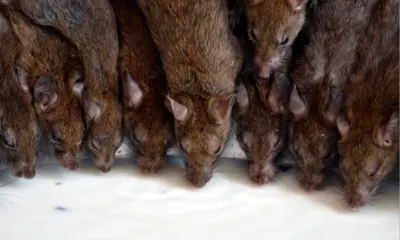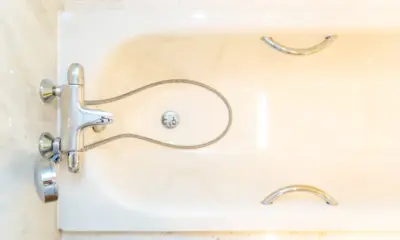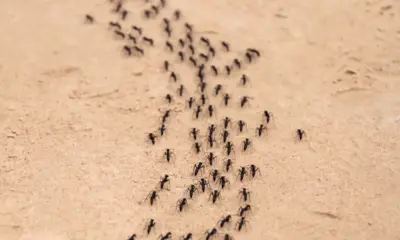Pest Control
Identifying and Eliminating House Centipedes: A Complete Guide

House centipedes can be both a beneficial and unsettling presence in your home. Though they are helpful in controlling other pests, their appearance can be alarming due to their many legs and rapid movements. Here’s everything you need to know about these creatures and how to deal with them.
What Is a Centipede?
Centipedes are arthropods belonging to the Chilopoda class, characterized by their long bodies and numerous legs. Depending on the species, they can have anywhere from a few dozen to several hundred legs. Their name comes from the Latin words centi (100) and ped (foot). These creatures are nocturnal and fast-moving, often scurrying away when spotted.
Types of Centipedes

There are over 8,000 species of centipedes worldwide, though not all are common in homes. The most frequently encountered species in homes is the Scutigera coleoptrata (house centipede), which has a yellowish-gray appearance and 15 or more pairs of legs. Other types include the giant desert centipede and the cryptopid centipede, depending on your location.
What Do Centipedes Eat?
Centipedes are carnivores, preying on a variety of smaller household pests. Their diet typically includes:
- Spiders
- Cockroaches
- Crickets
- Silverfish
- Worms
Some larger species may also prey on small animals like lizards or frogs.
How Do Centipedes Defend Themselves?
Centipedes have several ways to defend themselves:
- Speed: Their rapid movement allows them to escape predators and find hiding spots.
- Biting: Some species can deliver a venomous bite to their prey or potential threats.
- Pinching: With specialized legs, centipedes can pinch and inject venom to subdue their prey.
Where Are You Likely to Find Centipedes?
Centipedes thrive in moist environments, so you’ll most likely find them in areas like:
- Bathrooms
- Basements
- Crawl spaces
- Kitchens (especially under sinks or appliances)
They often come indoors looking for food, moisture, and shelter. If you find centipedes, there may be other pests in your home that are providing them with a food source.
How Do Centipedes Get Into Your Home?
Centipedes enter homes through cracks, gaps, or openings in the foundation, doors, or windows. They are particularly drawn to dark, damp areas such as bathrooms or basements. Once inside, they seek shelter in hidden places like piles of towels, laundry, or dark corners.
Can Centipedes Damage Your House?
No, centipedes are not destructive to homes. They don’t feed on household materials, and while their venomous bites can be uncomfortable, they are not dangerous to humans. Centipedes are more of a nuisance due to their appearance and speed.
Why Are Centipedes in My House?
Centipedes are attracted to homes that offer an abundance of food sources, such as other pests. If you have centipedes in your home, it may indicate an underlying infestation of other pests like cockroaches, silverfish, or termites. Addressing the root cause of the infestation is key to controlling centipede populations.
How to Kill Centipedes
There are several methods for eliminating centipedes from your home:
- Vacuuming: If you don’t want to use chemicals, vacuum centipedes up and seal the vacuum bag before disposing of it.
- Shoes: A quick squish with a shoe is a simple, though not very hygienic, method.
- Sticky Traps: Place sticky traps in areas where centipedes are frequently seen, like near walls or doorways.
- Insecticide Dust: Use insecticide dust in cracks and crevices to target centipedes without liquids. Products containing deltamethrin, pyrethrin, or boric acid are effective.
- Insecticide Spray: Sprays containing bifenthrin or cypermethrin can quickly eliminate centipedes on contact. Always follow instructions and keep chemicals away from children and pets.
- Exterminators: If the problem persists or the infestation is severe, it may be best to consult a pest control expert.
Centipede Pest Control
While centipedes are often considered a pest, they can also be helpful in controlling other common household pests, such as cockroaches and spiders. If you find a few centipedes, consider whether they might be keeping other pests in check. If you have a larger infestation, however, it’s important to address it promptly.
By understanding their behavior and identifying the root cause of the infestation, you can effectively manage centipedes in your home. Whether you choose natural methods or chemical treatments, taking action will help keep these fast-moving creatures at bay.












